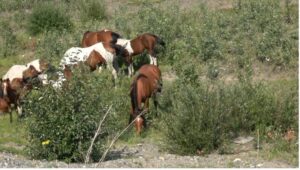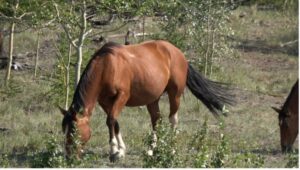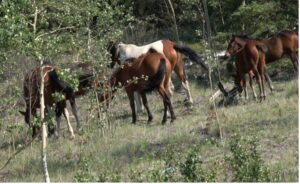Exploring the Ibex Valley: A Hidden Gem in Yukon

Nestled west of Whitehorse, the Ibex Valley is a stunning and ecologically diverse region in the Yukon, Canada. Spanning approximately 30 kilometers in length and 5 kilometers in width, this valley is known for its rolling hills, lush meadows, and the winding Takhini River. It’s a place where wilderness meets human history, and it’s a vital area for wildlife, traditional knowledge, and sustainable land use.

Geography of Ibex Valley
The Ibex Valley is a mix of Crown land, private properties, and First Nations settlement lands. The area is bordered by the Ibex Mountain Range, providing dramatic views and rugged landscapes. While the valley stretches across a wide geographical area, the Hamlet of Ibex Valley, a local advisory area, covers about 207 square kilometers and is home to roughly 523 residents. This rural community is located along the Alaska Highway and is accessible from Whitehorse, just a short drive to the east.

First Nations Ties to Ibex Valley
The Ibex Valley is part of the traditional territories of several First Nations:
- Kwanlin Dün First Nation (KDFN)
- Ta’an Kwäch’än Council (TKC)
- Champagne and Aishihik First Nations (CAFN)
For generations, these First Nations have used the valley for hunting, fishing, trapping, and seasonal travel. The Takhini River was a crucial waterway for Indigenous peoples, who would travel through the valley on their way to other parts of their territory.
The valley also plays an important role in the cultural identity of these communities, with many oral histories and stories passed down through generations. Elders speak of the relationship between people, animals, and the land, and how wildlife—especially wild horses—has shaped the area’s history.
Wildlife in Ibex Valley
One of the most remarkable features of the Ibex Valley is its wildlife. The region is home to diverse species, including moose, caribou, wolves, lynx, and bison. It is also a critical habitat for wild horses, which roam freely in the valley. These wild horses, a symbol of the area’s natural beauty, are closely monitored by organizations like the Friends of the Yukon Wild Horses Society.

In addition to horses, the Ibex Valley is known for its boreal forests, alpine tundra, and riparian habitats along the Takhini River, making it a haven for bird watchers and wildlife enthusiasts. Conservation efforts are vital to protect this unique ecosystem, and many local organizations work alongside First Nations groups to safeguard the land.

The Hamlet of Ibex Valley: A Rural Community
The Hamlet of Ibex Valley is primarily a rural community with off-grid cabins, homesteads, and small farms. Residents live a self-sufficient lifestyle, relying on solar power, wood heating, and well water. The community is part of the larger Local Advisory Area, which helps ensure that local governance remains attuned to the needs of the people and the environment.
While the Hamlet does not have its own incorporated municipal government, it falls under the governance of the Yukon Government’s Municipal Services, which provides support and oversight. The area is governed by a Local Advisory Council, which advises the Yukon government on local matters, including infrastructure, land use, and community development.
The Friends of the Yukon Wild Horses Society: Protecting the Wild Horses of Ibex Valley
The Friends of the Yukon Wild Horses Society (YWHS) is a non-profit organization committed to the protection and conservation of the wild horses in the Yukon, particularly in the Ibex Valley. Since its formation, the society has worked tirelessly to ensure that wild horse populations remain healthy and protected from human interference.
Mission and Activities
| The Friends of the Yukon Wild Horses Society focuses on the following key objectives: Monitoring Wild Horse Populations |  |
Public Awareness and Education
- A key mission of the YWHS is to raise awareness about the wild horses and their importance to the Yukon’s ecological heritage. The society engages in educational initiatives aimed at local communities and visitors, teaching about the role of wild horses in the ecosystem and the importance of wildlife conservation. They also work with other local organizations and First Nations to ensure that traditional knowledge is incorporated into modern conservation practices.
- Wild Horse Safety
As part of its efforts to protect wild horses, the YWHS also focuses on the safety of the herds. They work to mitigate human-wildlife conflicts, especially by cultivated land.
- Scientific Research
The society partners with research organizations and universities to conduct scientific studies that contribute to the understanding of wild horse populations. These studies help inform best practices for conservation and land management in the Ibex Valley and beyond.
Conservation Efforts in Ibex ValleyThe Friends of the Yukon Wild Horses Society has been instrumental in monitoring wild horse populations in the area. The society’s efforts include:
|  |
Through these initiatives, theFriends of the Yukon Wild Horses Society helps protect the valley’s natural heritage, mitigating human-animal conflict, and conservation needs.
Conclusion: A Valley Rich in Nature and Culture
| The Ibex Valley is not only a natural wonder but also a place of deep cultural significance. From the majestic wild horses to the rich First Nations heritage and the close-knit rural community, the valley embodies the harmony between people, wildlife, and the land. As conservation efforts continue to grow, it is hoped that future generations will continue to enjoy this incredible area, both for its natural beauty and its cultural legacy. |  | |
 � � | One of the best ways to experience the Ibex Valley is to view the wild horses along the highway. These majestic creatures often graze or wander near the Alaska Highway, providing a rare and unforgettable glimpse of the wild beauty that defines this region. Whether you’re a wildlife enthusiast, a hiker, or someone interested in First Nations history, the Ibex Valley offers a wealth of experiences. | |
 | � |  |